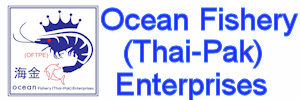Fishery and Aquaculture Country Profile for Greenland
- aquatic species caught by country or area, by species items, by
FAO major fishing areas, and year, for all commercial, industrial,
recreational and subsistence purposes. The harvest from mariculture,
aquaculture and other kinds of fish farming is also included
Commercial Fishing Industry in Greenland
The fishing industry in
Greenland is very important to the national economy of Greenland and
local food supply. It is the source of many people's livelihoods all
across the country, employing some 6,500 out of a national
population of 56,452 people (2010).
Fishing exports from Greenland in the past 20 years are accounted at
about 90% of the country's total exports with international firms
finding it a profitable business. Exports are mostly to USA, Japan,
Norway, Thailand, Germany, Great Britain, Iceland and Denmark. The
contribution of fishing industries to the economy of Greenland as a
whole is estimated to be more than 50%; contribution to gross
national income of the country is reported to be as high as 20%.
The fish that dominate the Greenlandic fishing industry are mainly
shrimps, cod,
halibut and salmons. They are caught and processed in Greenland
and then are sold, often exported in frozen cans. The center of the
fishing industry lies in the south of the country, the main hub is
in Disko Bay in the southwest. source: Wikipedia
Greenland Arctic whitefish fisheries enter MSC assessments - Aug
09, 2013
Greenlandís
cod,
haddock and
saithe fisheries in the North East Arctic area of the Barents
Sea have entered MSC assessment. If successful, and subject to
traceability certification, products from the fisheries will be
eligible to bear the MSCís blue Certified Sustainable Seafood
ecolabel.
The fishery, representing three Greenland boats - Sisimiut, Polar
Princess and Ilivileq - first started in the 1990s under two
agreements between Greenland, Denmark, Russia and Norway. All three
vessels have on-board processing facilities and supply most of their
catch (80%) to the UK. Nearly all of these (more than 90 %) are
processed as filets, pinbones in, with or without skin. The rest is
block-frozen headed and gutted.
COUNTRY NOTE ON NATIONAL FISHERIES MANAGEMENT SYSTEM Ė GREENLAND
- Given the immense economic importance of fisheries to Greenland Ė
an industry that accounts for approximately 92% of Greenlandís total
exports, the requirement for a well-solidified legal framework and
stellar administrative system is paramount. The Greenland Home Rule
Governmentís Fisheries Act is precisely the legislation, which
constitutes Greenlandís legal framework and administrative
underpinnings by which the Executive Branch manages fisheries
policies. The government has continually sought to achieve
well-established relationships and well-endowed trust between local
trade organizations and the fishing operations they represent, as
well as the government-owned seafood operation, Royal Greenland, in
order to align domestic fisheries policies and legislative acts with
the domestic and international interests of these parties.





